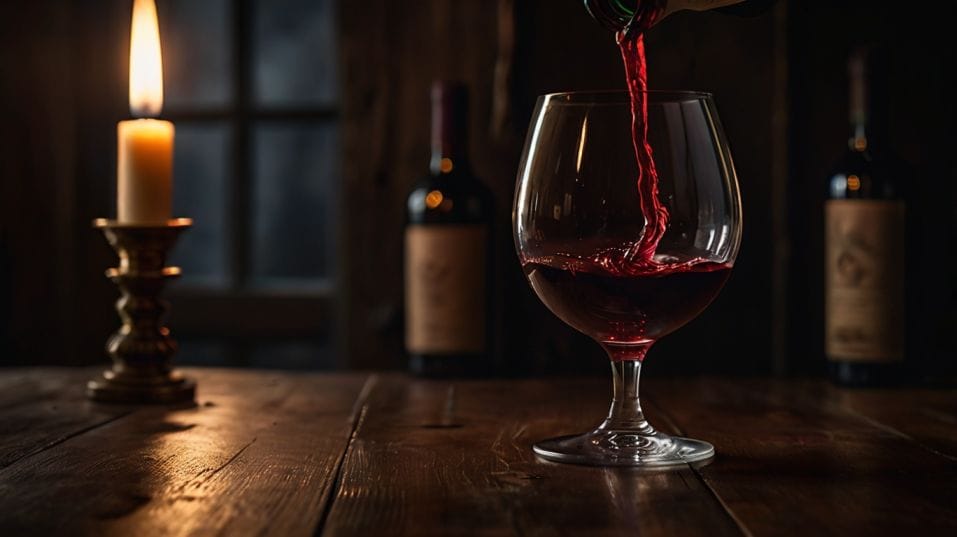Why You Should Swirl Wine (Even If You’re at Home)
Discover why swirling wine isn’t just for show. Unlock deeper flavor, build tasting confidence, and transform every sip—even at home.

Ever wonder why seasoned wine lovers always give their glass a swirl? It’s not just for show. Swirling unlocks what’s hidden—aromas, flavors, character you might otherwise miss.
Whether you're sipping at home or just starting your wine journey, this small, deliberate move changes everything.
It deepens your experience, sharpens your senses, and helps you trust your own palate. No pretense, no special tools—just a better way to taste. And it starts with a swirl.
Swirling Isn’t Optional—It’s Essential
When you swirl wine, you’re engaging with it in a way that reveals what’s beneath the surface. Wine is full of volatile aromatic compounds, the building blocks of flavor.
But when a wine is just poured—especially one that’s been sealed tightly in a bottle—it can feel closed-off. Aromas are locked in, muted by the lack of air.
Swirling exposes the wine to oxygen, waking up those aromatics and letting the wine stretch out and show you what it’s made of.
You’re not just making it smell better. You’re giving yourself access to the wine’s full character. That hit of dark cherry you catch on the nose?
It might not be there until you swirl. That mineral edge or floral lift? Also hidden at first. Without air, many of a wine’s most expressive traits stay flat. Swirling helps them rise.

It Sharpens Your Sense of Taste
Swirling is how you prepare your wine to be tasted at its best. But it also prepares you. Smelling wine right after swirling helps calibrate your senses. You’re training your nose and brain to pick up on detail.
This is where you start to notice how smell and taste interact—how the aroma influences what you expect from the sip, and how the flavor confirms or surprises that expectation.
Over time, you become better at reading wine before you even taste it. You recognize a cooler climate from the freshness of the fruit. You sense oak from the spice in the air. You pick up on age, ripeness, texture.
These are clues—not just for that one glass, but for choosing wine more intelligently going forward.
Swirling gives you those insights faster and with more clarity. It connects what you smell with what you taste, making every sip more complete.
Technique: Simple, But Deliberate
There’s no perfect “correct” way to swirl, but a few things help. Use a proper wine glass—something with enough room in the bowl to allow the wine to move. Avoid overfilling it; leave space for air and aroma.
If you’re not comfortable swirling in the air, set the glass on a table and gently rotate it in small circles.
The movement doesn’t need to be big or dramatic—just enough to expose more of the wine’s surface to oxygen. It takes three seconds, and it makes a difference.
Then immediately bring the glass to your nose. That first inhale—right after swirling—is often the most revealing. Don’t rush it.
Let your attention settle on what you’re smelling. Is it fruit-forward? Savory? Sharp? Sweet? You’re not trying to name everything—you’re just noticing. That’s how you build awareness, and eventually, confidence.
Swirling Builds Confidence and Curiosity
At home, swirling adds structure to your tasting—even if it’s just a glass with dinner. It invites you to slow down and ask, “What’s here?”
That’s a very different experience than drinking wine on autopilot. It turns your casual sip into a small discovery.
More importantly, it helps you trust your own palate. You’re not relying on the back of the bottle, or a tasting note someone else wrote.
You’re observing the wine yourself. That connection—between the swirl, the aroma, and the flavor—grounds your experience. It helps you make sense of why you like certain wines and not others.
This pays off when you’re choosing bottles, pairing with food, or explaining what you enjoy to someone else. You become someone who’s not just drinking wine, but understanding it.
Swirling Is Part of the Ritual
Even if you're drinking something inexpensive or familiar, swirling adds intentionality. It’s a signal—to your senses and to yourself—that this moment matters. It’s about presence, not pretense.
Over time, it becomes part of your wine rhythm. Pour. Swirl. Smell. Sip. Repeat. You don’t need candlelight or a cheese board. Just you, the glass, and a little attention. And that’s enough to transform how you experience the wine.
Because wine, when you let it speak, has something to say. Swirling helps you hear it more clearly.
Final Thoughts
Swirling is a small act with a big return. It brings your wine to life, sharpens your senses, and gives you a deeper connection to what’s in your glass.
You don’t need to memorize varietals or chase rare bottles to get more out of wine. You just need to start noticing—and swirling is where that starts.
So the next time you pour a glass, take a second. Swirl it. Smell it. Taste it with fresh attention. See what reveals itself.
That’s how wine becomes more than a drink—it becomes a conversation. And you’ve just learned how to speak the language.




